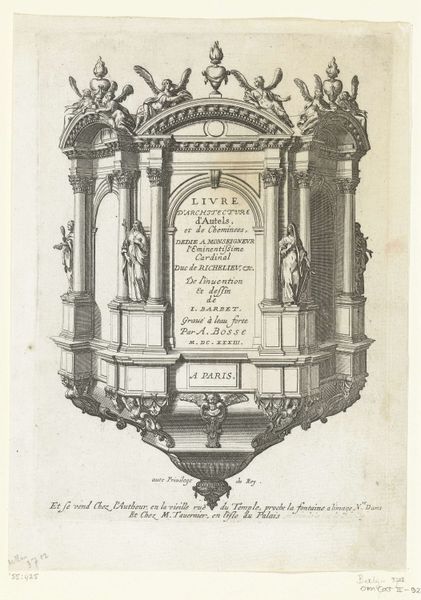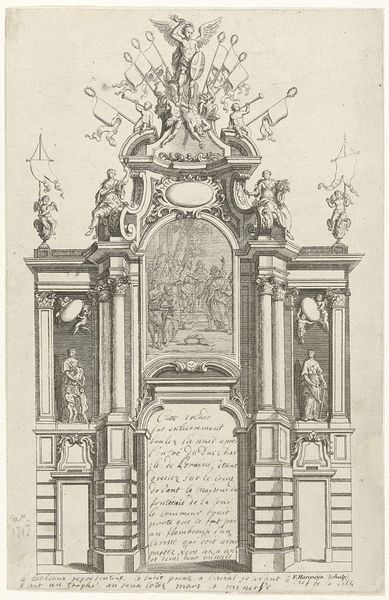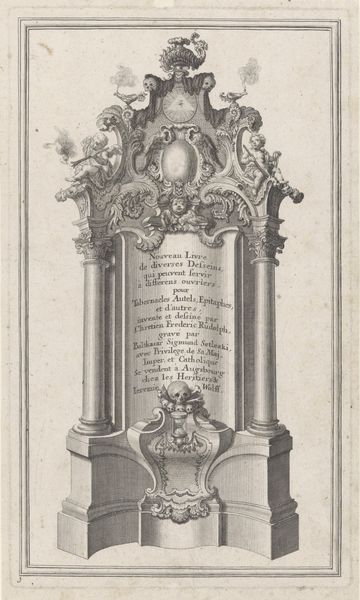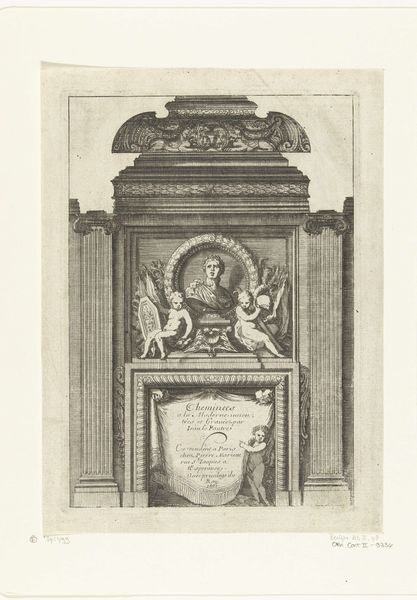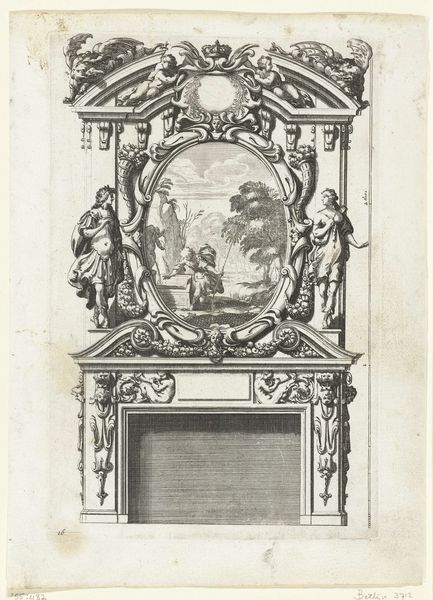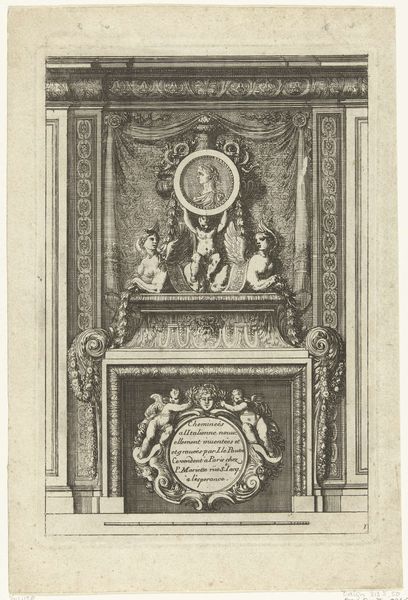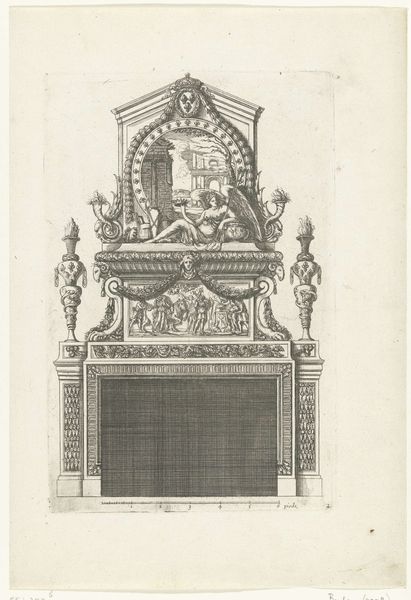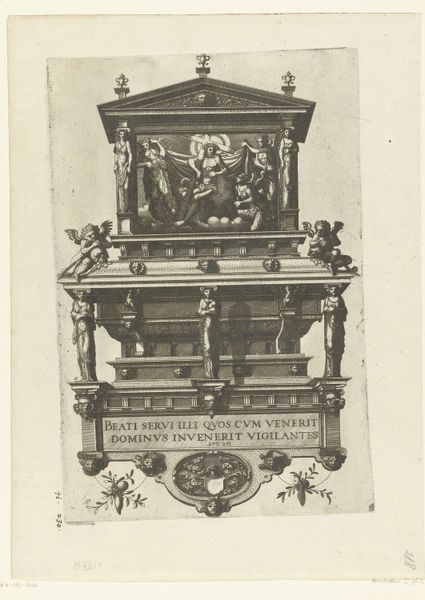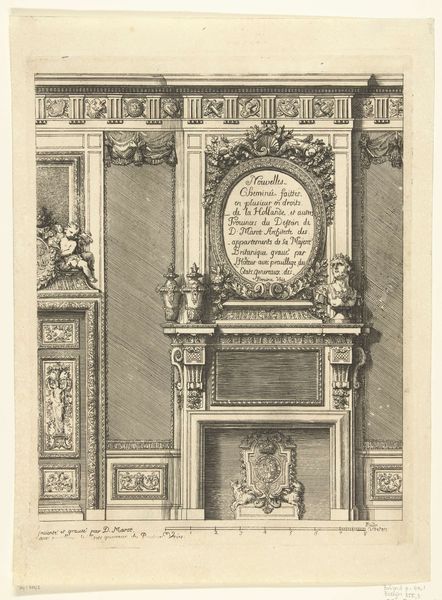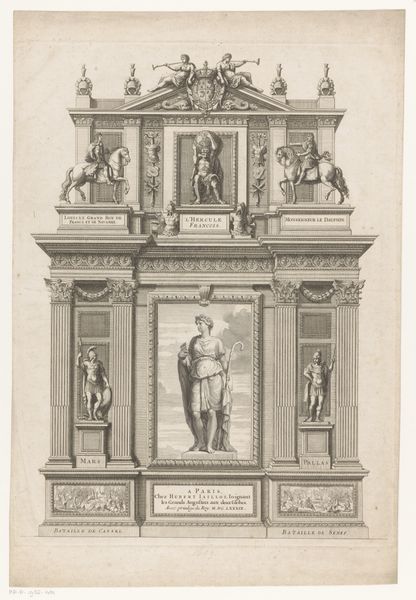
Titelblad: Oficina Arcvlaria ((...)), Bovticqve Menvseries ((...)), Schriner Laden ((...)), Schrinwerckers Winckel (...) 1642
0:00
0:00
anonymous
Rijksmuseum
print, engraving, architecture
#
baroque
# print
#
old engraving style
#
form
#
line
#
history-painting
#
engraving
#
architecture
#
historical font
#
columned text
Dimensions: height 308 mm, width 208 mm
Copyright: Rijks Museum: Open Domain
Curator: Ah, this engraving presents an intriguing challenge. The composition immediately strikes me as quite rigorous—a symmetrical edifice composed of crisp lines and meticulously rendered architectural details. Editor: It does possess a certain formality, yes. We are looking at a title page from 1642, “Titelblad: Oficina Arcvlaria…,” created by an anonymous artist, and housed here at the Rijksmuseum. What I find compelling is the way the architectural structure also frames a declaration of commerce. Curator: Precisely. Consider the deliberate juxtaposition of the robust columns and the ornamental flourishes; they serve as both support and embellishment for the textual content, almost elevating it to the status of scripture. And note how the textures are suggested with such economy—the engraver understands line and form intimately. Editor: Indeed, and these layers present us with a fascinating window into the socio-economic landscape of 17th-century Amsterdam. Here, the business of craftsmanship—the “Oficina Arcvlaria,” “Bovticqve Menvseries,” the workshops for carpenters and cabinet makers—is quite literally enshrined within the symbolic framework of civic pride and burgeoning commerce. Curator: I concur. The symbolic weight is undeniable. This visual language is almost hieroglyphic, using architectural form to express an entire commercial ethos. The relationship between structure and surface… Editor: Reflects the values of the era, where both skill and the aesthetic presentation of trade mattered greatly. The structure reminds one that the Dutch Republic’s Golden Age flourished precisely when commercialism pervaded every sphere of life. It’s all integrated. Curator: In short, it functions as a manifesto of functional elegance, even. It unites artistic sensibility with utilitarian purpose. Editor: And perhaps serves as a kind of advertisement that underscores how business becomes part of the cultural fabric. Seeing this work provides much food for thought! Curator: Agreed! It brings into focus the inherent beauty and complex structure in the art itself.
Comments
No comments
Be the first to comment and join the conversation on the ultimate creative platform.

